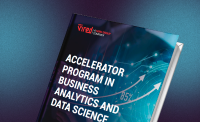Supervised Learning
Supervised learning is a type of machine learning where a model is trained using labeled data. In this approach, the input data is presented to the model along with the corresponding correct output or target value.
| Model |
Characteristics |
Application |
Supervised Learning |
Training involves labeled data with known input features and corresponding target variables.
Model learns to generalize patterns and map input features to the target variable.
Aim is to predict or classify new, unseen data based on learned patterns.
Supervised learning is widely used in various domains, such as image and speech recognition, sentiment analysis, fraud detection, and recommendation systems. It enables tasks like object detection, speech recognition, sentiment classification, and personalized recommendations. |
Unsupervised Learning
Unsupervised learning is a type of machine learning where the model is trained on unlabeled data, meaning the data does not have predefined labels or target values. In unsupervised learning, the goal is to discover patterns, structures, or relationships in the data without prior knowledge of the output.
| Model |
Characteristics |
Application |
Unsupervised Learning |
Training involves unlabeled data with only input features provided.
Model discovers patterns, structures, and relationships within the data.
Aim is to find hidden patterns, groupings, or clusters in the data.
Unsupervised learning finds applications in anomaly detection, customer segmentation, topic modeling, and dimensionality reduction. It helps identify unusual patterns, group similar customers for targeted marketing, extract topics from text data, and reduce features while retaining important information. |
Regression Machine Learning Models
A regression machine learning model is a type of model that is used to predict continuous numeric values. In regression, the goal is to establish a relationship between a set of input variables (also known as features or predictors) and a continuous target variable. The model learns from the data to make predictions of the target variable based on the input features.
| Model |
Characteristics |
Application |
Regression Machine Learning Models |
Predicts continuous numeric values as the target variable.
Model learns the relationship between input variables and the output variable.
Estimates values within a range rather than categorizing them into distinct classes.
Regression models are widely used for sales forecasting, housing price prediction, stock market analysis, and demand forecasting. They help predict future values, estimate prices, analyze market trends, and forecast demand for products or services. |
Classification Machine Learning Models
Classification machine learning models are algorithms used to categorize or classify instances into predefined classes or categories. In classification tasks, the goal is to learn a decision boundary or a mapping between input features and the corresponding class labels.
| Model |
Characteristics |
Application |
Classification Machine Learning Models |
Classification models predict categorical labels or classes for a given set of input features.
These models learn the decision boundaries between different classes in the data.
They assign new, unseen instances to predefined classes based on the learned patterns.
Spam email detection, disease diagnosis, sentiment analysis, image classification, credit risk assessment, and more. These models find applications in healthcare, finance, marketing, and image recognition, where assigning categorical labels to new instances is crucial. |
Ensemble models Machine Learning Models
Ensemble models in machine learning are techniques that combine the predictions of multiple individual models to make more accurate and robust predictions. The idea behind ensemble modeling is that the combination of diverse models can often outperform any single model, as the strengths of one model can compensate for the weaknesses of another.
| Model |
Characteristics |
Application |
Ensemble models Machine Learning Models |
Ensemble models combine the predictions of multiple individual models.
They utilize techniques like bagging, boosting, or stacking to aggregate predictions.
Ensemble models aim to improve overall performance and prediction accuracy.
Ensemble models find applications in various domains, such as predicting customer churn, fraud detection, stock market forecasting, recommendation systems, etc. They are beneficial when high accuracy and generalization are required, making them popular in finance, e-commerce, healthcare, and marketing industries. |










